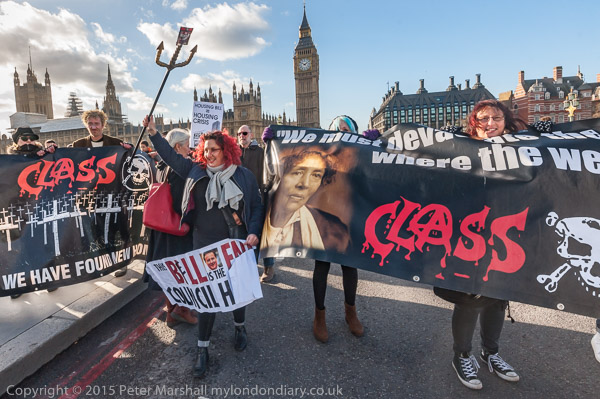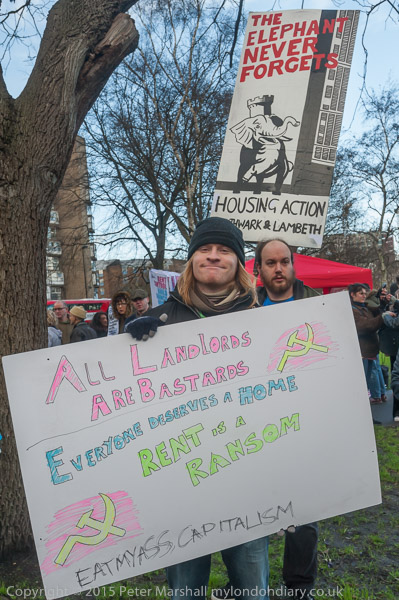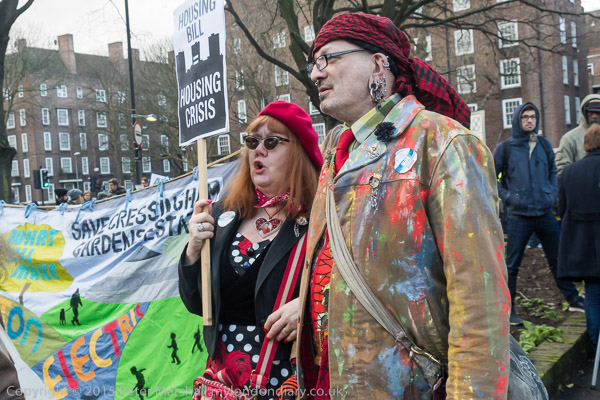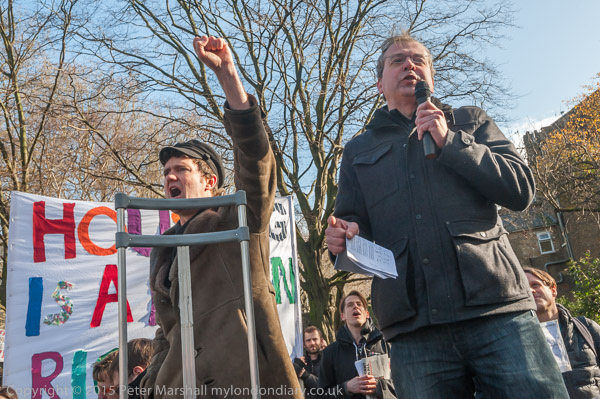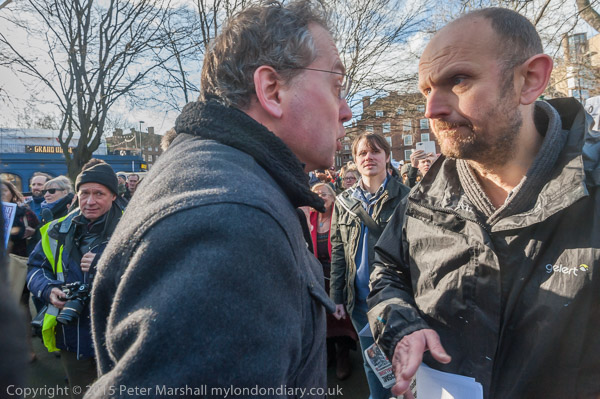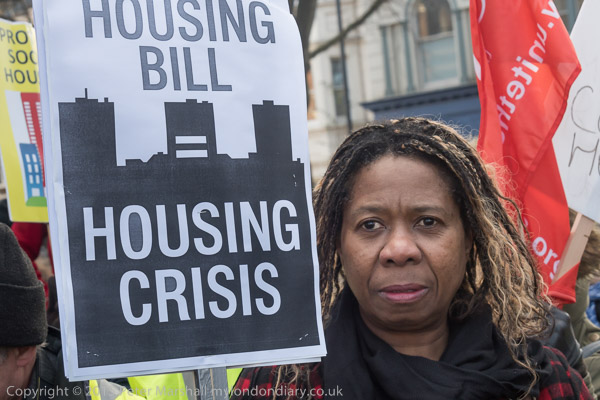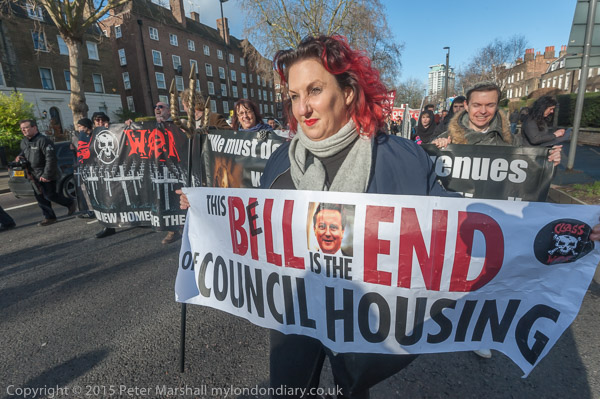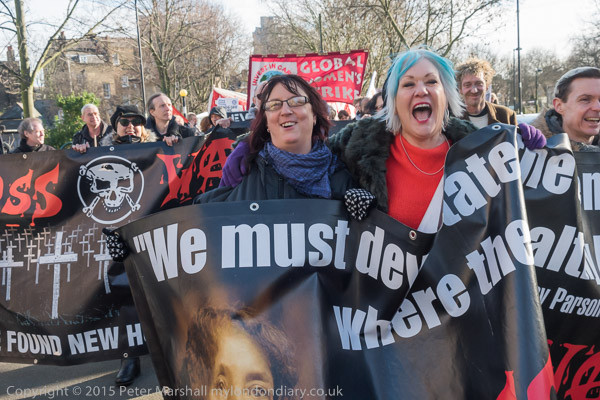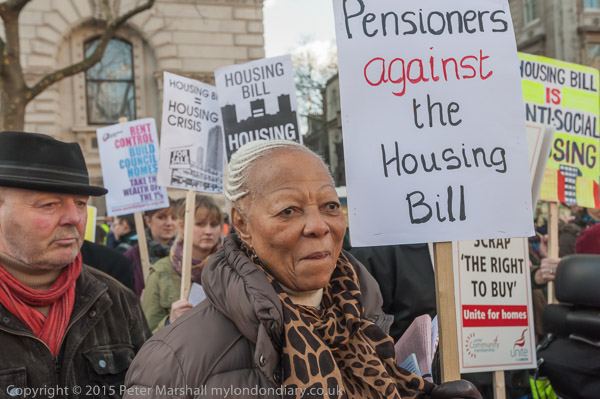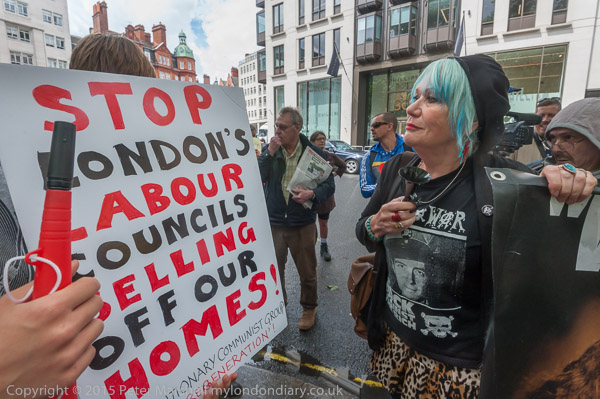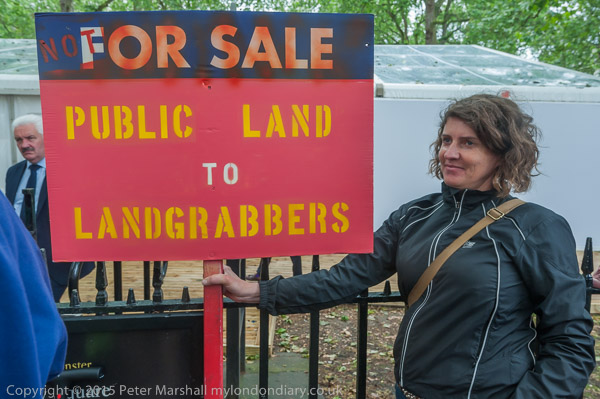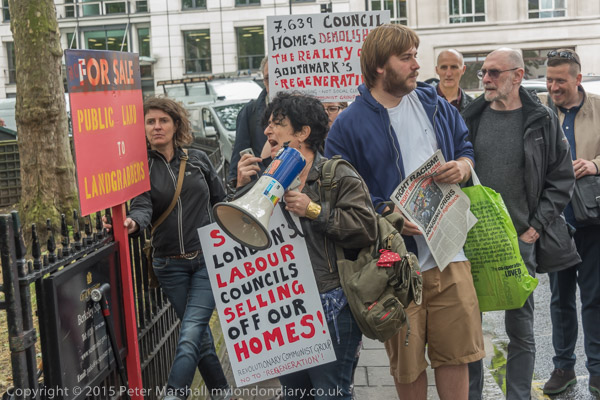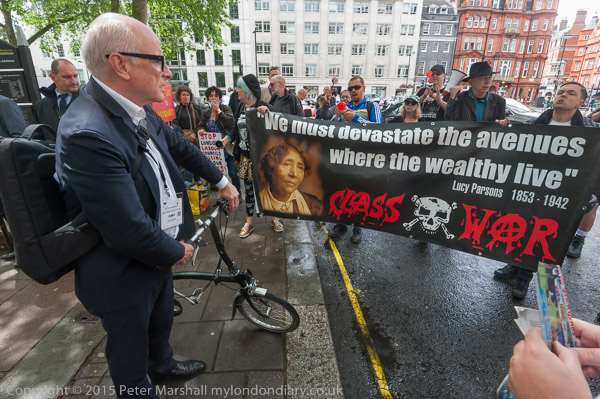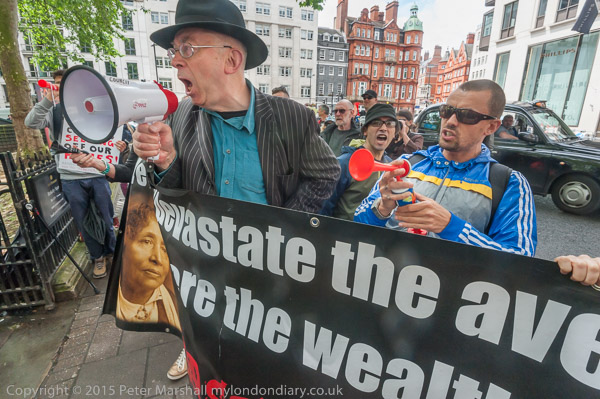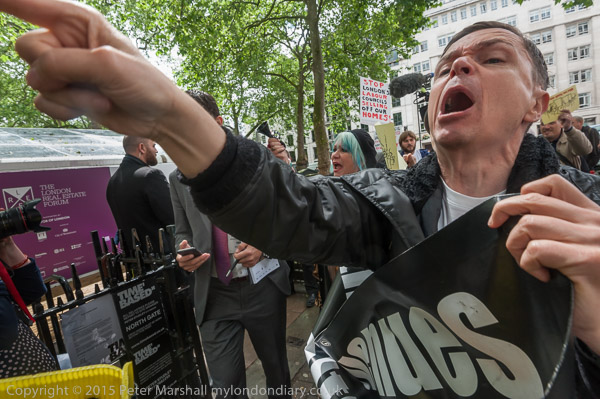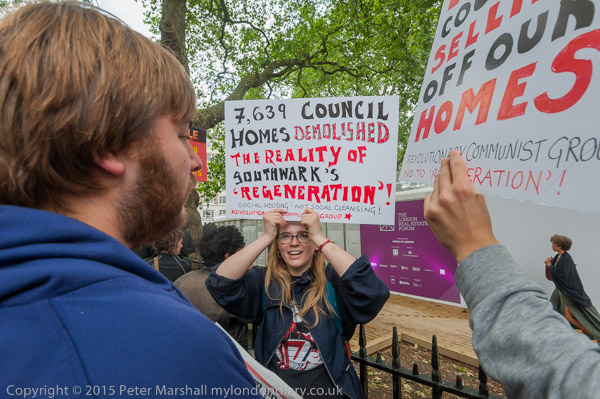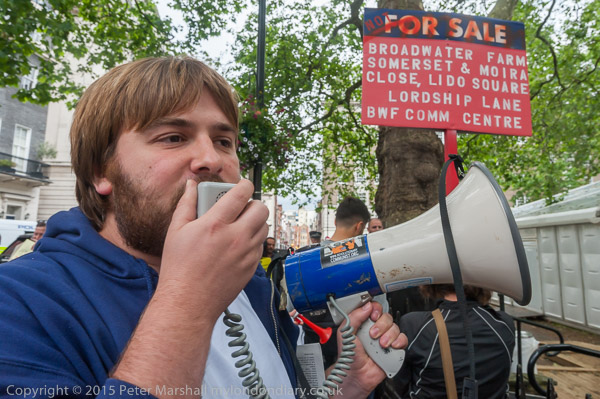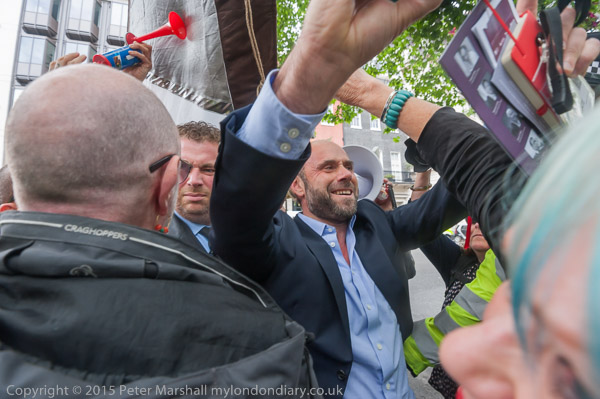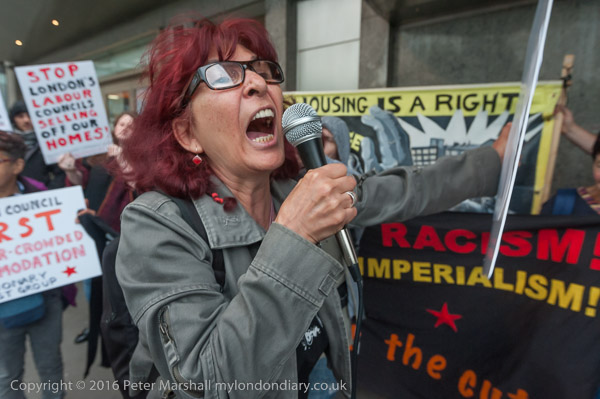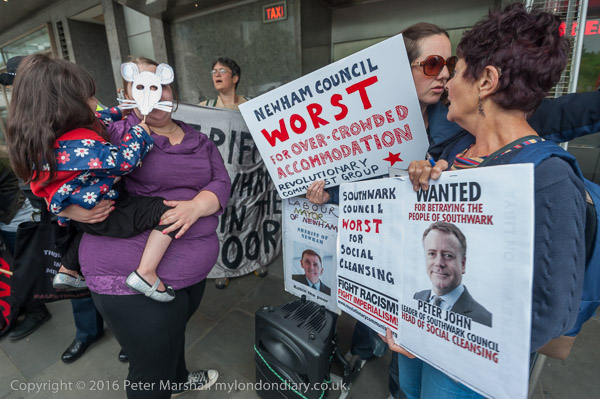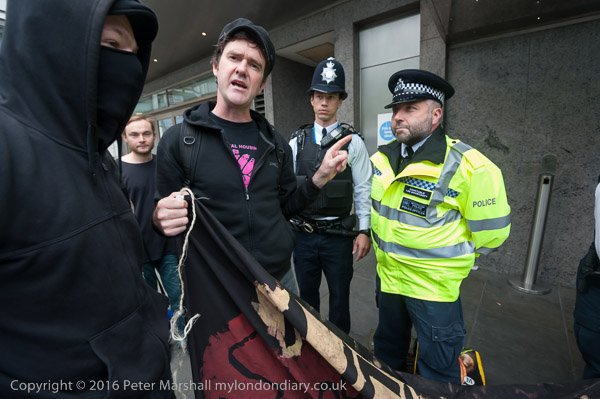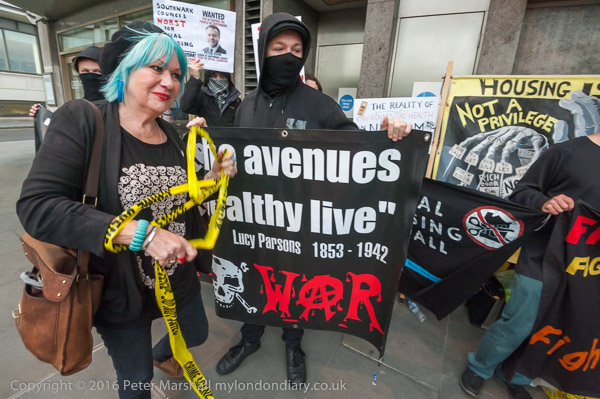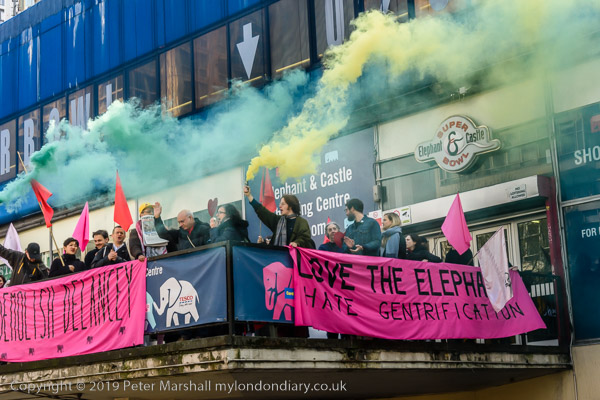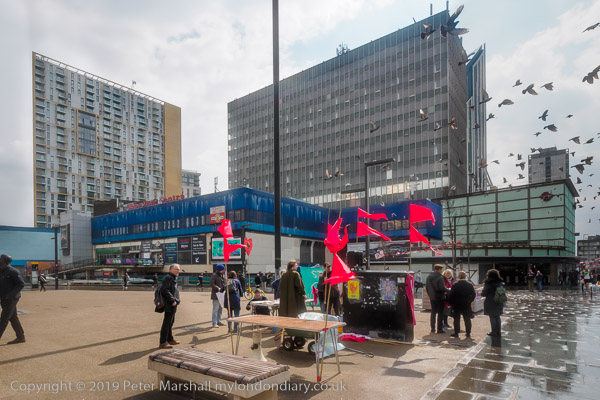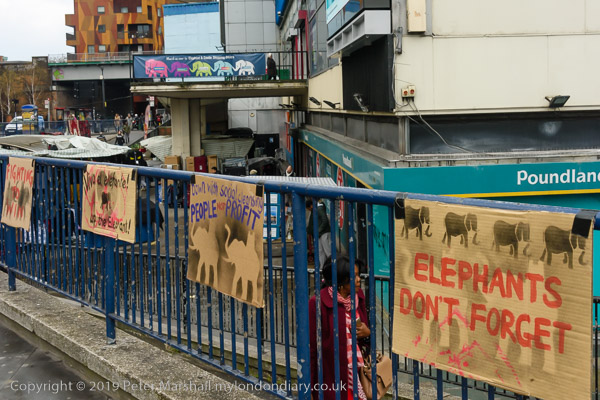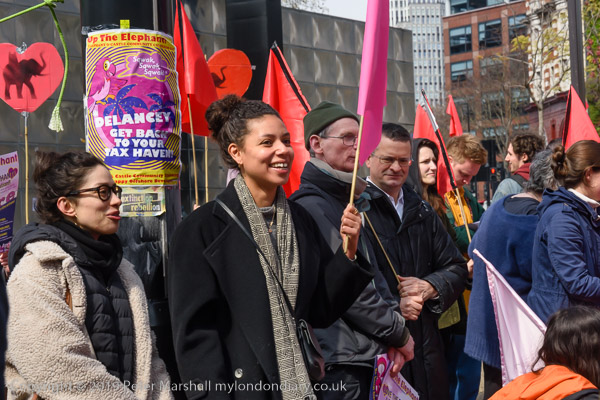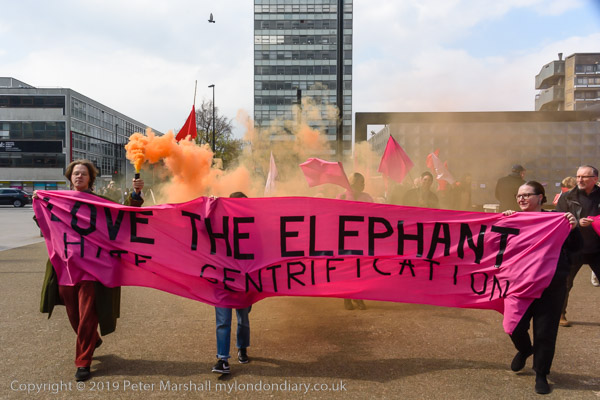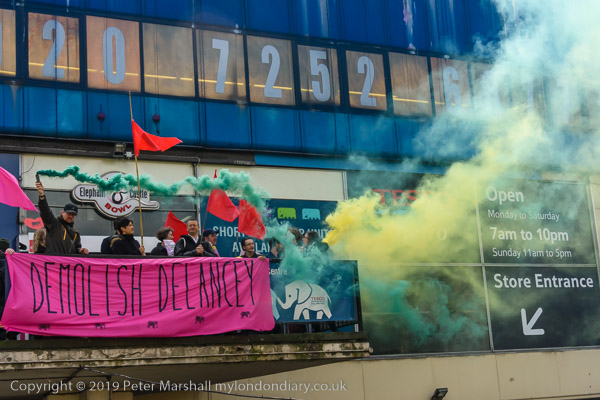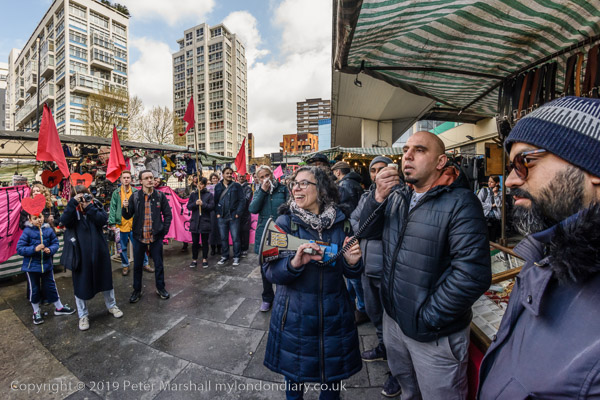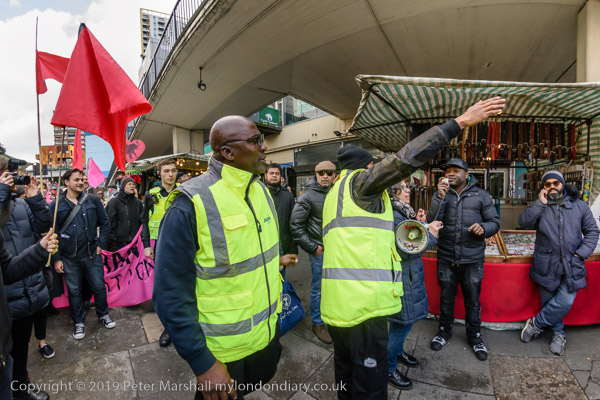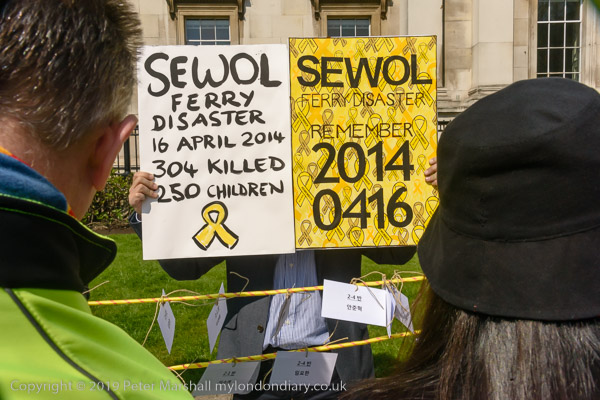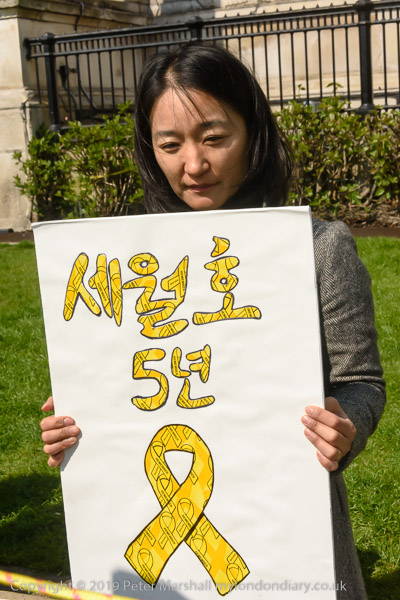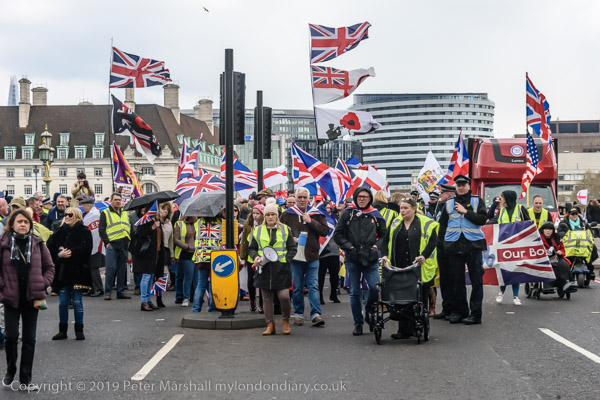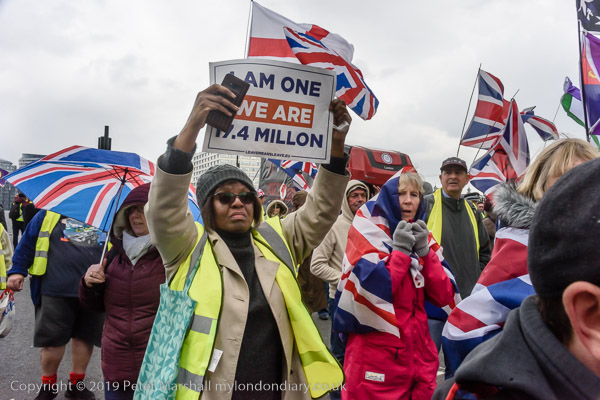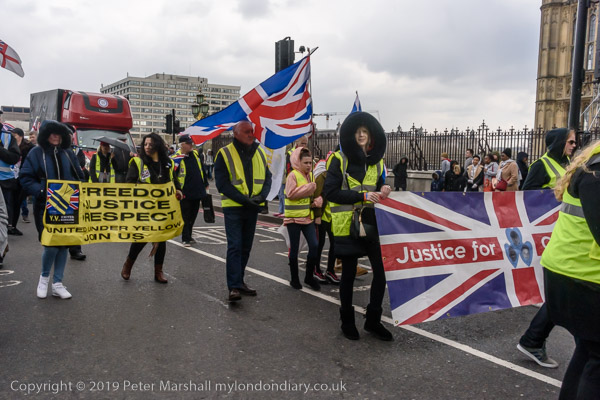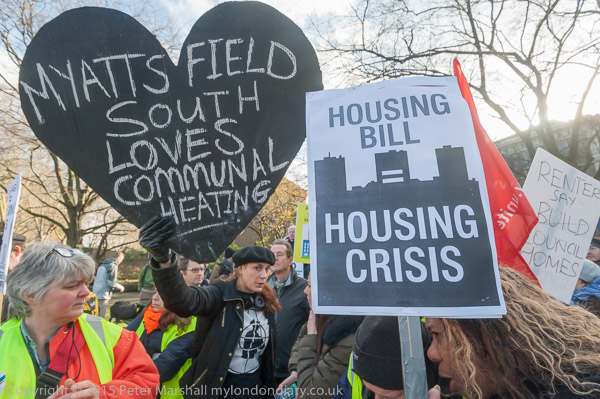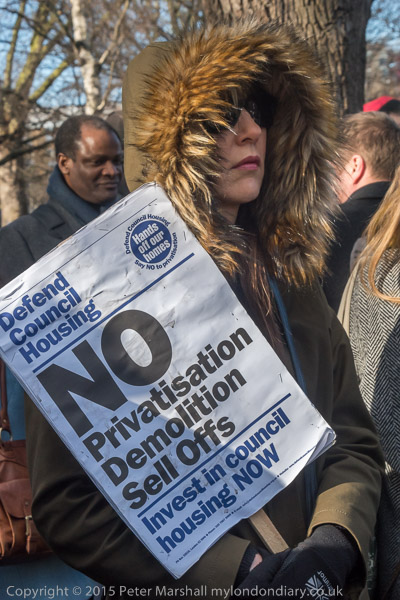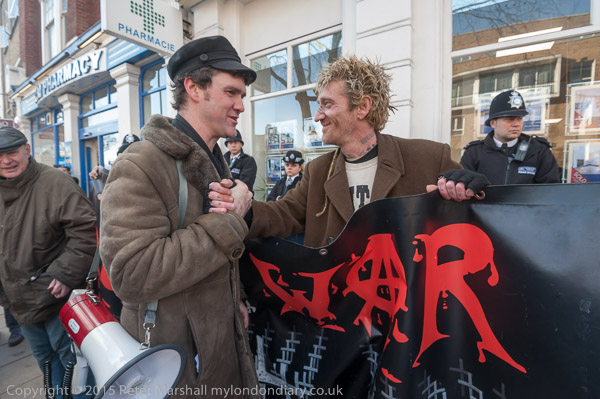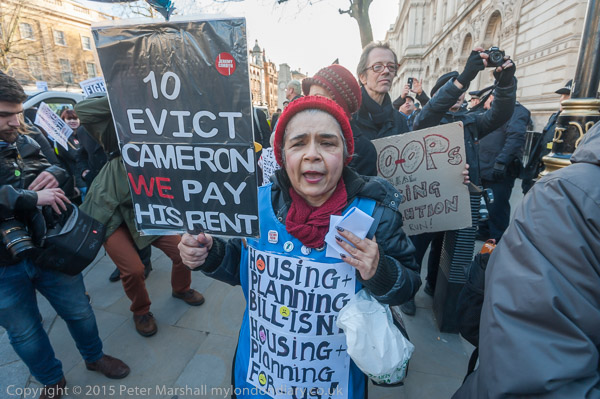Southwark Housing, Bermondsey Panoramas & Rembrandt Against Shell: On Thursday October 16th 2014 I went with housing campaigners on a march to Southwark Council Offices. They claimed that the council leader and other councillors and officers have accepted gifts and jobs from developers and were selling off council estates at knockdown prices. I had some time free after that and took a short walk along the Thames making some panoramas before rushing to the National Gallery where the Art Not Oil coalition were protesting outside a gala evening for special guests including unethical sponsors such as Shell.
CPOs for Southwark Councillors
Elephant to Southwark Council Offices

Housing campaigners from Southwark were joined by members of the Focus E15 Mums ‘Housing for All’ campaign at the base of the Strata Tower at Elephant and Castle, a tower nicknamed ‘The Razor’ for its three entirely decorative ‘greenwash’ rooftop wind turbines – which cannot be used as they generate unacceptable vibration for the upper floor flats.

Facing them was One The Elephant, then under construction, a 44 storey block of luxury flats with no social housing, being sold abroad, with ‘studio flats’ starting at around £320,000 or 640,000 Singapore dollars.
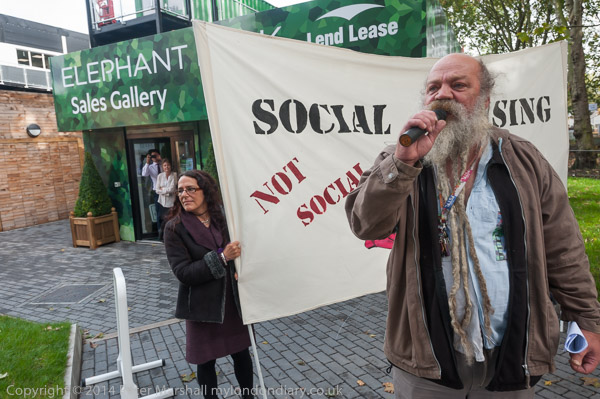
They marched to protest briefly at the Elephant Park Sales Office on the Walworth Rd before walking on through the Heygate council estate where over 1200 homes were demolished and the site sold to developers for a knock-down cost – apparently less than the costs of ‘decanting’ the tenants and far below its proper valuation. Despite this leaseholders were only given compensation of around half the true market value of property in the area, forcing them to move out into the suburbs to buy property in far less convenient areas giving them long and expensive work journeys.

The replacement by Elephant Park means a loss of over a thousand social housing units, with a small number of so-called affordable units at 80% of market rates, still well above what most Londoners can actually afford. The new flats were being sold to overseas buyers in Singapore and elsewhere as second homes, investment properties, homes for wealthy overseas students studying here, buy-to-let etc.

From there they walked through some of Southwark’s 1930’s and postwar council estates, now seen as prime targets for demolition of social housing. Its replacement with higher density high price ‘luxury’ flats would generate huge profits for the developers (and lucrative rewards for councillors and council officers.)

The march carried on to a similar area of council properties around Long Lane and Tennis Street where again similar changes – gentrification labelled as regeneration – seem likely, before going through Guy’s Hospital and London Bridge Station to Tooley St and the Southwark Council Offices.

There they held a short rally after which security stopped them entering to hand in letters for Southwark Council Leader Peter John and two other councillors containing ‘People’s Compulsory Purchase Orders‘ for their homes, but after much argument and the presence of police Liliana Dmitrovic of the ‘People’s Republic of Southwark’ and another protester were allowed in. As Southwark residents they argues they had a right to enter the council offices.

They went to reception and asked to see the three councillors and were told to take a seat and wait. They sat there for some time but eventually Stephen Douglas from Southwark Council came to tell them that all three named on the letters were in meetings and unavailable, but promised he would personally deliver the letters. They handed them in to him and left.
More on My London Diary at CPOs for Southwark Councillors.
Bermondsey Thames Panoramas
City Hall to Angel Wharf
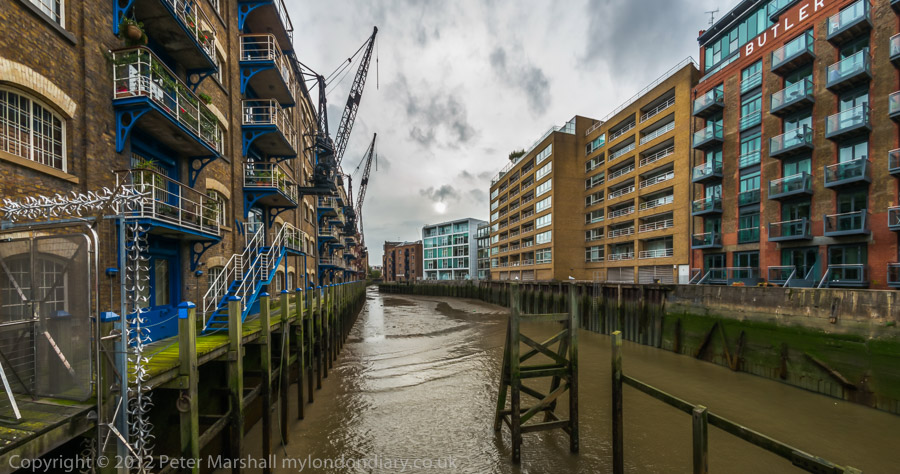
I crosssed the road from the council offices and went through the gardens by City Hall to walk by the Thames, going briefly down Horselydown steps just downriver from Tower Bridge onto the foreshore.
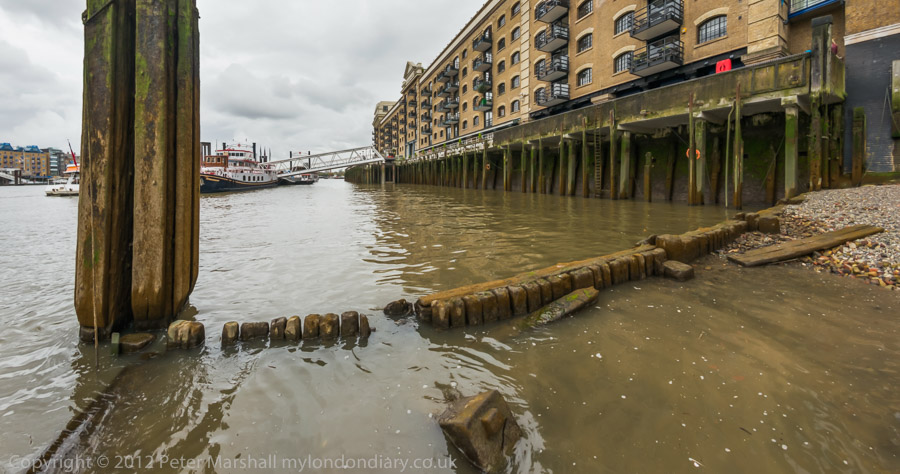
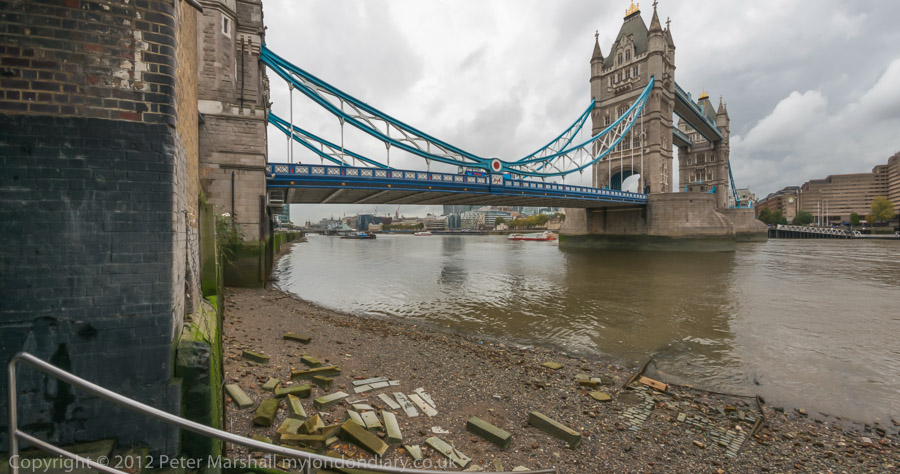
I came back up to Shad Thames, a painful pastiche of its former industrial past. Quickly I made my way to the riverside path and walked on, stopping as usual at the footbridge across St Saviour’s Dock to take more pictures.

I walked on in some interesting lighting and got very involved in taking pictures, rather losing track of time. At West Lane I realised I was in danger of arriving late at Trafalgar Square and ran down to the bus stop on Jamaica Road.
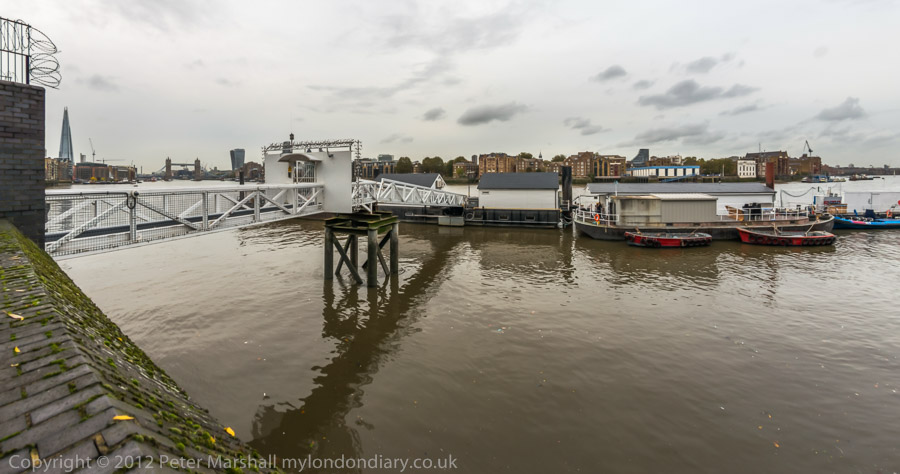
Many more pictures – not all panoramic – at Bermondsey Thames Panoramas.
Art Not Oil – Rembrandt Against Shell
National Gallery
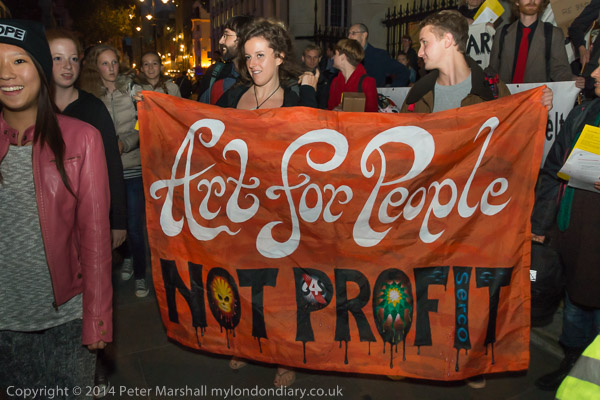
The Art Not Oil coalition had earlier gate-crashed the press launch of the Rembrandt exhibition at the National Gallery in a protest against oil company sponsorship of the arts and the privatisation of gallery staffing.
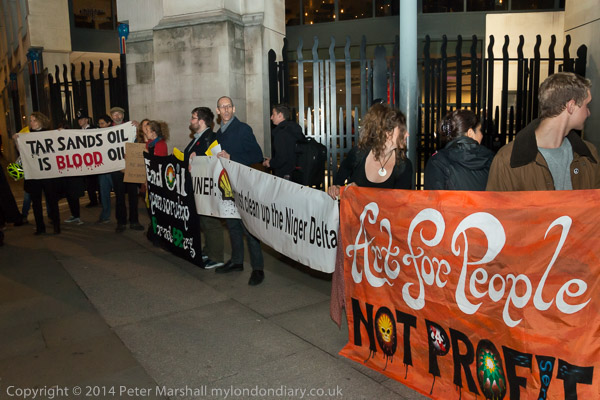
I arrived in time to meet them on the steps of St Martin-in-the-Fields just before they marched the few yards to the National Gallery where a gala evening was being held for special guests – including from the sponsors – and highly ranked staff.
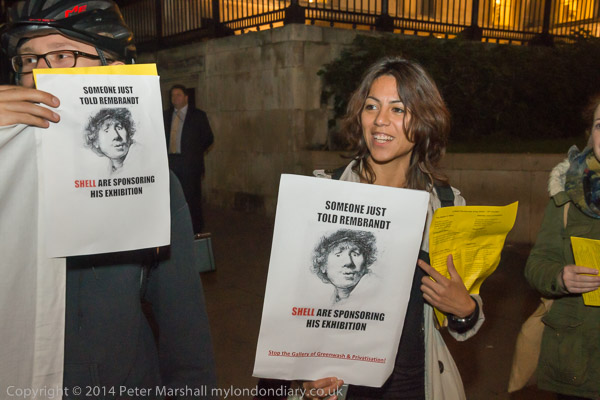
They turned down a protest pen the police had set up some distance from the entrance the guests would be using where their protest would not be noticed (what the police call ‘facilitating’ but campaigners know is minimising) and instead protested close to the entrance. Here there were some speeches and a repeat performance of their earlier performance which included a short playlet as well as some specially written songs.

Some of those who appeared at the press launch were professional actors now on stage elsewhere and so there were some changes in the cast. But it was still a very professional performance.
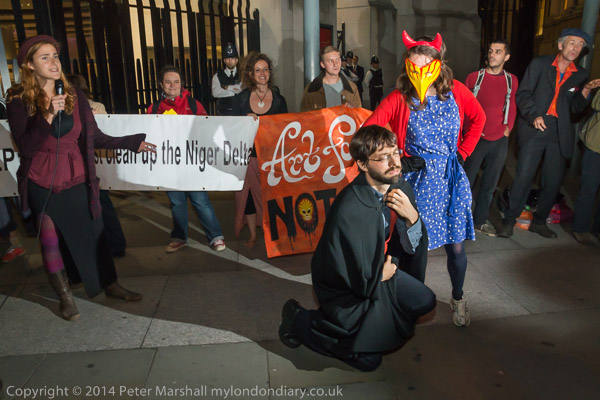
Here is the Art Not Oil statement:
The presence of unethical sponsors like Shell and the contracting of external security firms shows the growing influence the private sector is having over our arts and culture. With its meagre contribution to the gallery, Shell is buying social legitimacy for its dodgy deeds worldwide, including:
- its failure to clean up its multiple spills in the Niger Delta
- its reckless plans to drill in the Arctic for yet more oil
- its tar sands projects in Canada that are undermining Indigenous people's rights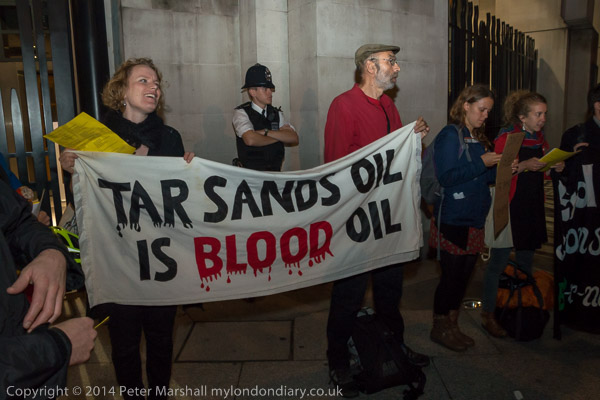
More at Art Not Oil Rembrandt Against Shell.
Flickr – Facebook – My London Diary – Hull Photos – Lea Valley – Paris
London’s Industrial Heritage – London Photos
All photographs on this page are copyright © Peter Marshall.
Contact me to buy prints or licence to reproduce.
